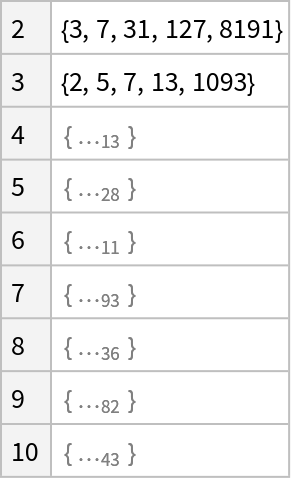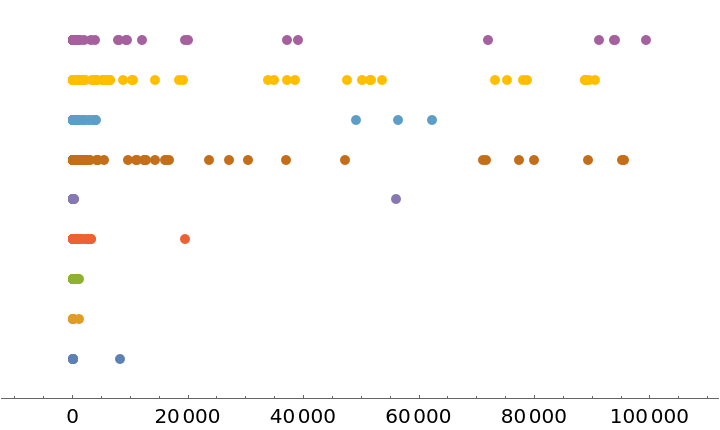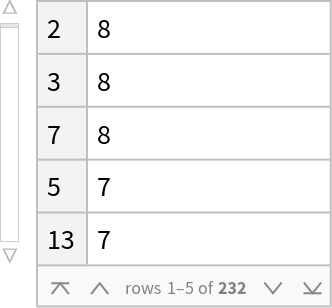Wolfram Function Repository
Instant-use add-on functions for the Wolfram Language
Function Repository Resource:
Test whether an integer is a circular prime
CircularPrimeQ tests whether an integer is a circular prime:
| In[1]:= |
| Out[1]= |
Test CircularPrimeQ on a non-circular prime:
| In[2]:= |
| Out[2]= |
Compute a list of base-10 circular primes in the first 100000 primes:
| In[3]:= |
| Out[3]= |  |
Make a number line plot of the resulting list:
| In[4]:= |
| Out[4]= |
Count circular and non-circular primes in the first 10000 primes:
| In[5]:= |
| Out[5]= |
Make a Dataset of the base-b circular primes among the first 10000 primes:
| In[6]:= | ![circularPrimesDataset = Dataset[AssociationThread[Range[2, 10], With[{primes = Range[10000]}, Table[
Select[Map[Prime, primes], ResourceFunction["CircularPrimeQ"][#, base] &], {base, 2, 10, 1}]]]]](https://www.wolframcloud.com/obj/resourcesystem/images/370/370dfd56-63ef-491b-86e7-8e717254e19c/27904f11fd2aa5cf.png) |
| Out[6]= |  |
Plot the result using NumberLinePlot:
| In[7]:= |
| Out[7]= |  |
Find out how many of the first 10000 primes are circular primes in bases 2 through 10:
| In[8]:= |
| Out[8]= |
Find out which of the circular primes in the first 10000 primes are circular in the most bases:
| In[9]:= | ![Dataset[ReverseSort[
Counts[ReverseSort[Flatten[Normal[Values[circularPrimesDataset]]]]]],
MaxItems -> 5]](https://www.wolframcloud.com/obj/resourcesystem/images/370/370dfd56-63ef-491b-86e7-8e717254e19c/158da4236013e989.png) |
| Out[9]= |  |
Wolfram Language 13.0 (December 2021) or above
This work is licensed under a Creative Commons Attribution 4.0 International License